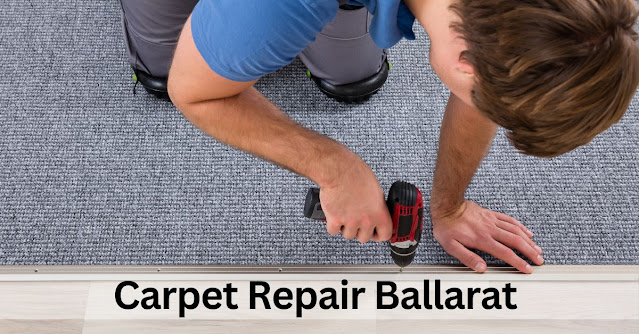DIY Carpet Repair Tips That Will Blow Your Mind
- Get link
- X
- Other Apps
Are you tired of staring at unsightly carpet damage in your home? Fear not! With these DIY carpet repair tips, you can breathe new life into your carpets and transform your space without breaking the bank. From tackling stubborn stains to repairing tears and frayed edges, these tips will blow your mind and leave your carpets looking as good as new.
Assess the Damage
The first step in any DIY carpet repair Central Coast project is to assess the damage. Take a close look at your carpets and identify any stains, tears, or areas of excessive wear. By understanding the extent of the damage, you can develop a plan of action to address each issue effectively.
Gather Your Tools and Materials
Once you've assessed the damage, gather all the tools and materials you'll need for the repair job. This may include items like a carpet knife, carpet seam tape, carpet adhesive, a seam roller, and replacement carpet if necessary. Having everything you need on hand will streamline the repair process and ensure that you can tackle any problem with confidence.
Tackle Stubborn Stains
Stubborn stains can be a major eyesore in your home, but they don't have to be permanent. To tackle stains effectively, start by blotting the affected area with a clean cloth to remove any excess moisture. Then, apply a gentle carpet cleaner and work it into the stain using a soft-bristled brush. Rinse the area with water and blot it dry to remove any remaining cleaner. For particularly stubborn stains, consider using a specialized carpet stain remover for optimal results.
Repair Tears and Rips
Tears and rips in your carpets can detract from the overall appearance of your home and pose a tripping hazard. To repair tears, carefully trim any loose fibers with a carpet knife and apply carpet seam tape to the underside of the tear. Press the edges of the tear together firmly and use a seam roller to ensure a secure bond. For larger tears, you may need to patch the area with a piece of replacement carpet.
Address Loose or Frayed Edges
Over time, the edges of your carpets can become loose or frayed, giving your home a worn-out look. To address this issue, apply carpet adhesive along the edges of the carpet and press them firmly into place. Use a heavy object to weigh down the edges as the adhesive dries to ensure a secure bond and a seamless finish.
Use Proper Technique
When repairing your carpets, it's essential to use proper techniques to achieve professional results. Take your time and work carefully, following the manufacturer's recommendations for any adhesives or patching materials. Use a sharp carpet knife for precise cuts and a seam roller to ensure that seams are secure and flat. By using proper technique, you can ensure that your carpet repairs blend seamlessly with the rest of your flooring.
Vacuum Regularly
Once you've completed your carpet repairs, it's essential to maintain them properly to prevent future damage. Regular vacuuming is key to keeping your carpets looking fresh and clean. Vacuum high-traffic areas more frequently to prevent wear and tear, and be sure to address any spills or stains promptly to prevent them from becoming permanent.
Conclusion
With these DIY carpet repair tips, you can tackle any carpet issue with confidence and achieve professional results without breaking the bank. Whether you're dealing with stubborn stains, tears, or frayed edges, these tips will blow your mind and leave your carpets looking as good as new. Don't let carpet damage hold you back—take action today and transform your space with these DIY carpet repair tips!
- Get link
- X
- Other Apps


.jpg)
Comments
Post a Comment